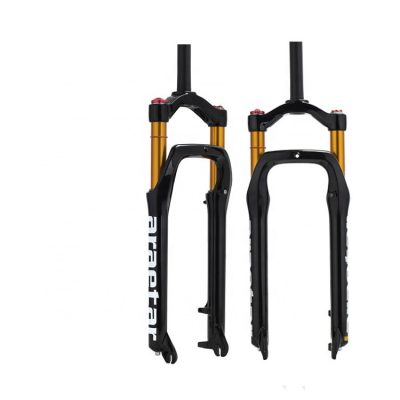Project Description






| Product Name | Bicycle Fork |
| Size | 24 Inch |
| Material | Aluminium Alloy |
| Travel | 104mm |
| Right Side | Lockout |
| Left Side | Preload |
| Axle | 10mm |
| Brake Type | Post-Mount, Disc Brake |
| Color | Black |
| Weight | 3kg |
| Steerer Tube | Steel, 205mmL |
| Feature | Spring
Air pressure Damping |
The front fork part of the bicycle is located in the front part of the bicycle structure. Its upper end is connected with the handlebar part, the frame part is matched with the front tube, and the lower end is matched with the front axle part to form a guide system of the bicycle.
Rotating the handlebars and the front fork can change the direction of the front wheel, which serves as a guide for the bicycle. Spring has the longest history and is the most common type of spring used in bicycle forks. The stiffness of the spring, the so-called spring rate (Spring Rate), represents the ratio of force to deformation. Under the principle of not exceeding the load, a simple coil spring has a fixed elastic coefficient under different stress states and will not be affected by the ambient temperature. After painting or lubrication, the stability and durability are high. But the only disadvantage of the wire spring is the weight, so higher-end front forks have begun to use lighter but more expensive titanium alloy springs.
Air pressure. Because the air is light, the use of air as a spring should be the most suitable for bicycles, and if a different hardness is required, there is no need to replace the spring, just increase or decrease the air pressure. However, the use of gas springs must have more sophisticated technology, and the high-pressure gas must be completely sealed. Once the gas pressure is lost, it will not work at all. Therefore, the early gas spring had a sealing problem, and even suddenly lost all the air pressure during use, this problem almost no longer occurs. But just like tires, it doesn’t say that there is no need for occasional pumping. Traditional pneumatic front forks also have the so-called stiction problem, that is, the Seal (oil seal) that seals the high-pressure air is very tight, and it seems to be a bit stuck. At the beginning of the compression, a large external force is required, so it responds to small vibrations. Not very keen.









